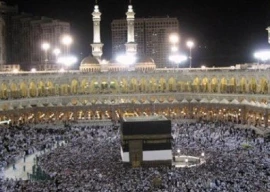
Successive governments have tried to arrest declining exports through devaluation in the Pakistani rupee. If the devaluation is large, exports would get a spike for a couple of years, however, they again start to decline since the effect is neutralised in due course.
FCCI to set up 'Textile Corner'
For instance, the rupee was heavily devalued in 2008, resulting in higher exports till 2013. The exporters were happy and expected a gradual decline of the rupee in future. But the government made its presence felt by appreciating the rupee, which dented the profitability and optimism of the exporters.
Then the government adopted a stable exchange rate and exports are on a downhill since 2013.
Taking stock of the situation, the government came up with an export package in early 2017, which won’t have a significant impact on exports. On the other hand, media commentators and experts are again advising to devalue the currency to boost exports, taking the economy back to square one.
This shows that economy is in a vicious cycle of exports decline and devaluation and so on.
How did the economy get trapped in this vicious cycle?
The answer may be obtained by tracing the history of industrial development. If history is our guide, the lesson is that successive governments promoted primary export-based industries such as food, textiles, apparel and footwear, which required less skilled human resources. This kind of industrialisation is normally pursued at the early stage of development and Pakistan also followed this during 1950s and 1960s.
The focus shifted to the services sector during 1970s with the wave of nationalisation programme. Even the decade of 1980s was not different since the services sector became a dominant player in an economy with a share of 48%. Then the share of services sector kept increasing and now it is around 58% of the GDP.
Pakistan can fill meat export vacuum after ban on Brazilian meat
On the contrary, the industrial sector has been stagnant since 1970s. The successive governments did not adopt a proper industrial strategy and ignored the industrial sector on critical junctures. Within industrial sector, textile-based industries were aided during 1990s due to the abundance of cotton in the country. Since 2005, the successive governments on and off provide adhoc packages to the stagnant textile industry to arrest its decline.
Today around 65% of the merchandise exports are textile, leather and footwear-based, while around 18% of the exports come from the food group. The share of low value added manufacturing sector is around 12%. Just 5% of the exports come from a medium value added manufacturing sector.
These statistics shows that the opportunity to earn valuable and precious foreign exchange is low. The export sector is low value added in character, which requires frequent injections from the government.
The low value added exports manifest that Pakistan is far behind in terms of technological capabilities.
In short, the medium value added manufacturing has the potential to earn a valuable foreign exchange and this could become the future of the country.
In the presence of low value added exports, the country cannot earn its way to development. Then the only option left to the policy makers is to either tap the strategic rents or borrow the way to development.
The writer is an Assistant Professor of Economics at SDSB, Lahore University of Management Sciences (LUMS)
Published in The Express Tribune, May 8th, 2017.
Like Business on Facebook, follow @TribuneBiz on Twitter to stay informed and join in the conversation.


1732538123-0/BeFunky-collage-(90)1732538123-0-165x106.webp)

1732536148-0/ariana-(1)1732536148-0-165x106.webp)

1732530440-5/Copy-of-Untitled-(85)1732530440-5-270x192.webp)

1732534225-0/Express-Tribune-(13)1732534225-0-270x192.webp)








COMMENTS
Comments are moderated and generally will be posted if they are on-topic and not abusive.
For more information, please see our Comments FAQ